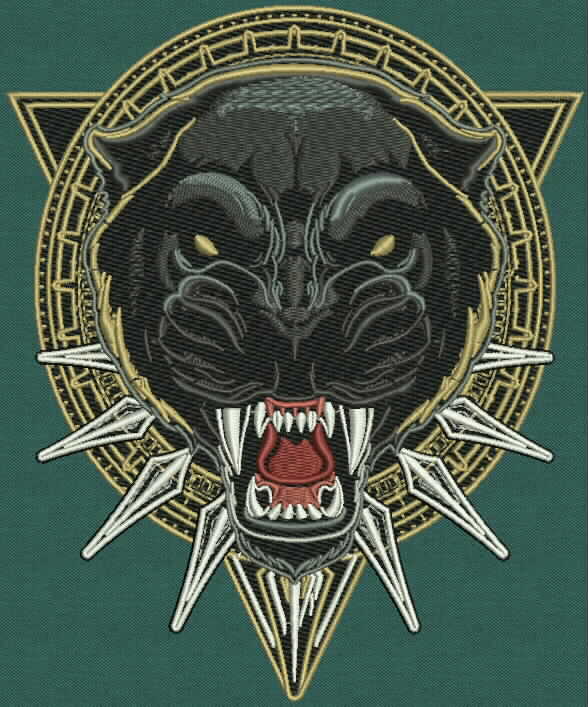Best Digitizing for Embroidery: Enhance Your Projects
Best Digitizing for Embroidery: Enhance Your Projects
Blog Article
Simplifying the Art of Embroidery Digitizing: Step-by-Step Overview
Needlework digitizing is a careful craft that requires precision and imagination. As innovation continues to advancement, the digitization process has actually come to be a lot more easily accessible, enabling lovers to bring their complex designs to life with ease. In this guide, we will certainly unwind the complexities of embroidery digitizing, breaking down each action systematically to streamline the procedure and equip both beginners and skilled embroiderers alike. Remain tuned to discover how you can simplify this intricate art kind and change your creative visions right into magnificently embroidered work of arts.
Understanding Embroidery Digitizing Software Program
Embroidery digitizing software application works as an important device for changing complex layouts into digital layouts compatible with needlework devices, facilitating accurate sewing and customization. This specific software program permits customers to import various image data layouts, such as JPG or PNG, and transform them into embroidery machine-readable formats like DST, EXP, or PES - Digitizing for Embroidery. By making use of functions like stitch editing, underlay alternatives, and string shade selection, digitizing software program enables users to manage every element of the style procedure
In addition, progressed needlework digitizing software application supplies devices for creating complex designs, changing stitch density, and integrating complex information. Individuals can likewise preview the style before stitching it out, making sure precision and lessening mistakes. Furthermore, several software application give automated attributes that assist enhance the digitizing process, saving effort and time.
Understanding the capabilities of needlework digitizing software program is essential for achieving high-quality cause needlework tasks. By understanding this device, needlework lovers and professionals can release their creative thinking and bring detailed styles to life with precision and efficiency.

Selecting the Right Design File
After familiarizing yourself with the capacities of needlework digitizing software, the next important action in the process is picking the appropriate layout data for your job. Digitizing for Embroidery. When selecting a style data for embroidery digitizing, it's essential to take into consideration the intricacy of the style, the size of the last product, and the kind of textile you will be dealing with
For intricate layouts with great details, a high-resolution photo or vector documents is suggested to make certain that the embroidery device can accurately reproduce the layout. Furthermore, the size of the last product plays a significant duty in picking the best design documents. Larger layouts might require greater resolution files to keep clearness and sharpness.
In addition, the type of material you will certainly be embroidering on affects the selection of style documents. Different materials may require modifications in the layout file to make certain that the stitches are effectively aligned and the style shows up as planned. By very carefully picking the right design data based upon these variables, you can set yourself up for a successful needlework digitizing procedure.
Digitizing Devices and Techniques
Using specialized software program and precision techniques, digitizing tools are crucial in transforming intricate designs into embroidery-ready data. Embroidery digitizing software application, such as Wilcom, Hatch, or Embrilliance, gives click here to find out more the necessary platform to convert artwork into stitch data. These programs use attributes have a peek at these guys like stitch editing and enhancing, rug choices, and text devices to make sure the style equates flawlessly onto textile.
Among the vital strategies in digitizing is developing a clear course for the needlework equipment to adhere to. This entails digitizing each component of the layout with accuracy, establishing stitch kinds, densities, and directions. By utilizing tools like digitizing tablets or software-specific plugins, embroiderers can achieve a high level of accuracy in their digitized designs.
Additionally, grasping the art of rug sewing is critical for creating quality needlework. Underlay stitching maintains the material and produces a foundation for the layout, making certain that the end product is both aesthetically enticing and resilient. By comprehending these digitizing tools and techniques, embroiderers can boost their craft and bring complex styles to life with precision and performance.
Personalizing Stitch Types and Instructions
The choice of stitch kinds can substantially influence the general appearance and structure of the stitched layout. By tactically incorporating these stitch types, embroiderers can achieve depth and dimension in their designs.
Additionally, the instructions of stitches plays a critical duty in boosting the aesthetic appeal of the final embroidery. By experimenting with different stitch angles and patterns, embroiderers can bring their designs to life with exceptional detail and ins and out.
Screening and Refining Your Digitized Layout
To make certain the precision and top quality of your digitized style, comprehensive testing and improvement are vital action in the needlework digitizing process. As soon as you have actually finished the digitization of your layout, it is vital to check it before continuing with the real embroidery. Examining permits you to identify any type of prospective problems such as thread breaks, stitch thickness issues, or style distortions that may influence the result.

After testing, it is necessary to refine your digitized design based upon the responses from the examination sew-out. This may involve tweaking sew setups, adjusting thickness, or making adjustments to the general design to achieve the wanted result. By iterating via screening and improvement, you why not find out more can adjust your digitized style to perfection prior to progressing with the real needlework process.
Verdict
In final thought, understanding the art of needlework digitizing needs a thorough understanding of the software program, choosing the right layout data, using digitizing tools and techniques, customizing stitch types and instructions, and testing and refining the digitized style. By following these actions, embroiderers can simplify the digitizing procedure and create high-grade stitched designs with accuracy and efficiency.
Report this page